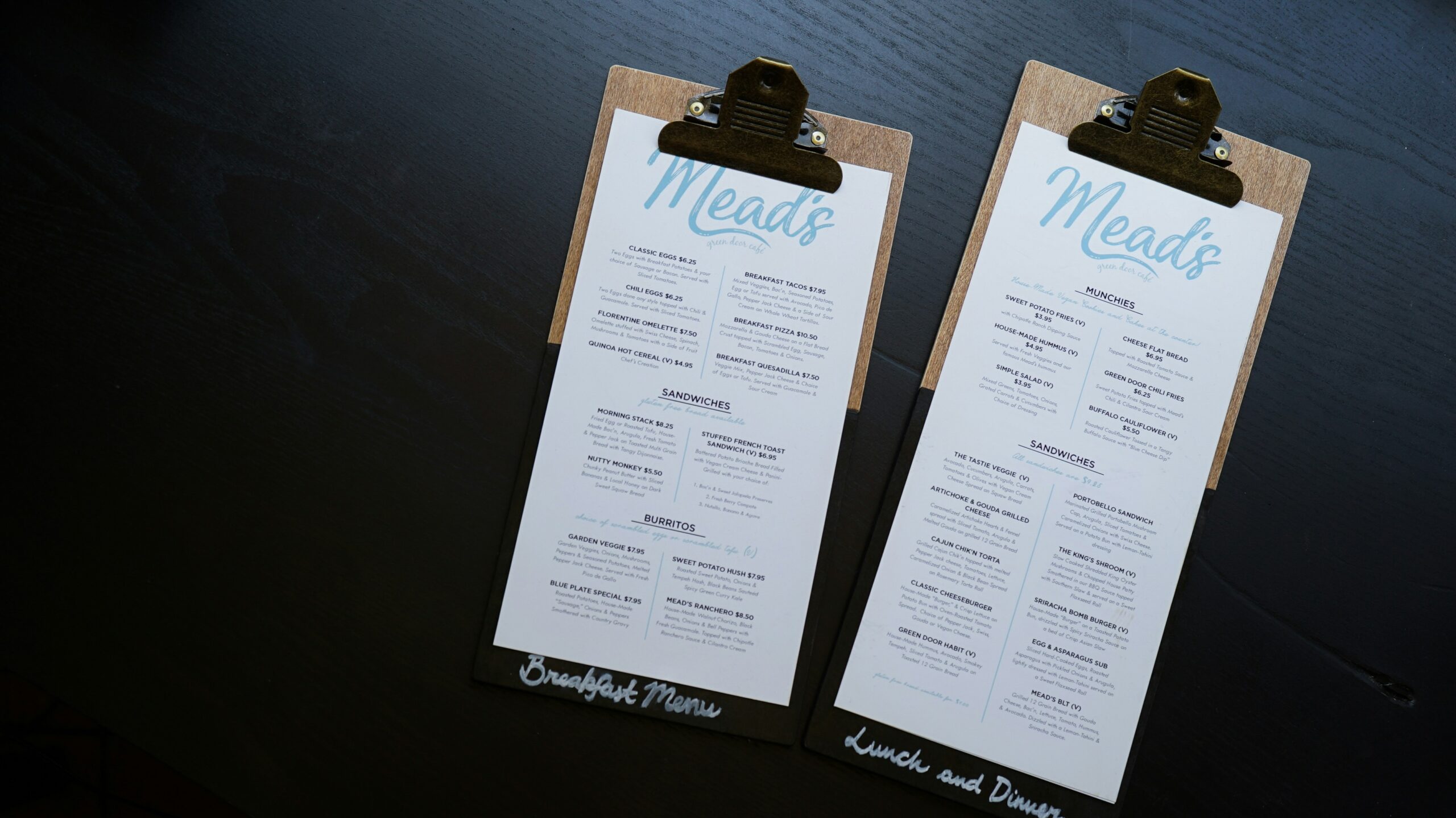
24 Apr 5 Best Ways to Get The Most Out Of Your Menu
Crafting a menu that’s both functional and effective involves more than simply listing dishes and prices. While those are essential elements, a well-designed menu also includes descriptive text and careful consideration of colour schemes and fonts. It should reflect your restaurant’s branding, atmosphere, and target audience.
In essence, creating a restaurant menu requires careful thought and attention to detail, especially in today’s context where both physical and online menus are necessary. A well-designed menu not only tells your restaurant’s story and connects with guests on a deeper level but also significantly boosts sales and revenue.
Customer research
Understand what your guests like and don’t like. Speak to your front of house team – what makes people’s eyes light up? What do they carry across the restaurant that makes heads turn? Speak to your KP – what doesn’t get eaten? Your team is your greatest resource, as they interact directly with customers and work on the front line.
Chat with your regulars – what makes them come back for more? Do a quick survey of your database as a whole to ask for more general feedback.
Analyse the data
Examine your sales data from the past three months to understand which dishes are performing well and identify opportunities for improvement.
Consider adjusting the prices of popular dishes to increase profit margins. Keep middle-of-the-road dishes with good sales and profit margins as they are, but strategically place dishes with lower sales volume and high-profit margins nearby to boost their sales. Question the necessity of dishes with low sales volume and low-profit margins.
Copy
Your menu should resonate with your guests. Pay attention to the language they use when describing your restaurant and food. Look at Google reviews for recurring terms and descriptions to incorporate into your menu. The tone of voice is crucial; avoid subjective descriptions and be clear about what guests can expect.
Consider font size, as larger words have a greater impact. Use space on the menu to convey your brand story and what makes your restaurant unique.
Design
Strategically use boxes and colours to draw attention to high-profit dishes that are popular with your guests. Avoid using pound signs for prices to prevent decisions based solely on monetary value. Don’t list prices in a column to discourage price-based comparisons.
Consider adding labels like “Chef’s Favourite” to influence guests’ choices. Place expensive items next to cheaper ones to make everything else seem more affordable. Research suggests people read menus in an “upside-down L” pattern, so place items you want to sell more of in the top right for maximum impact.
Don’t discredit the power of photos!
Guest Experience
Consider the “Instagrammability” of dishes—what are guests proud to post?
Incorporate modifications that guests commonly request. Anticipate and answer general questions, eg. “How hot is ‘hot’”?). Offer “discovery menus” like Bubala’s set menu to simplify the decision-making process for guests while offering profitable dishes.
